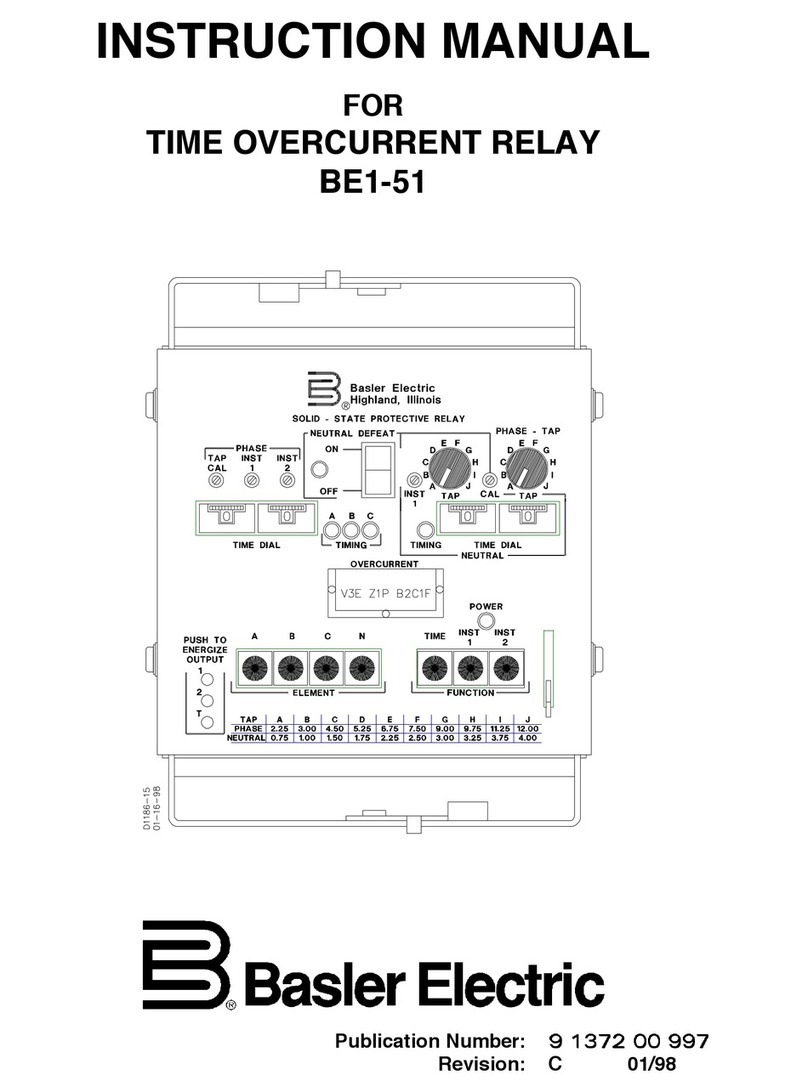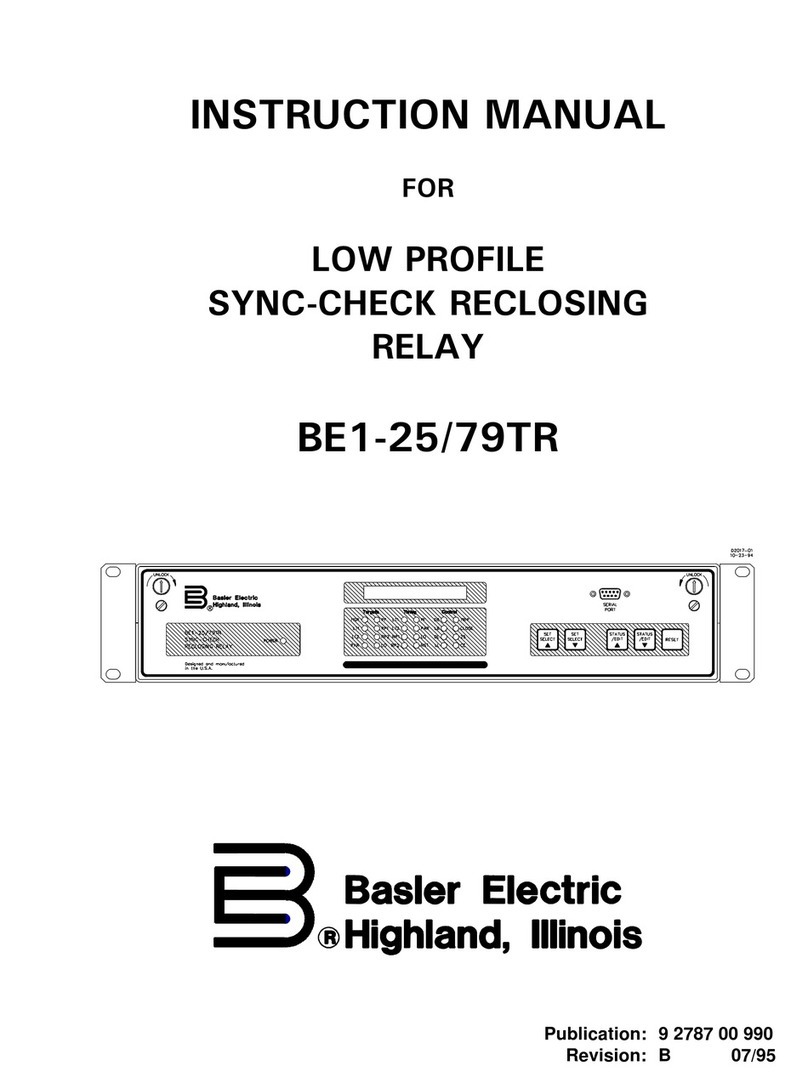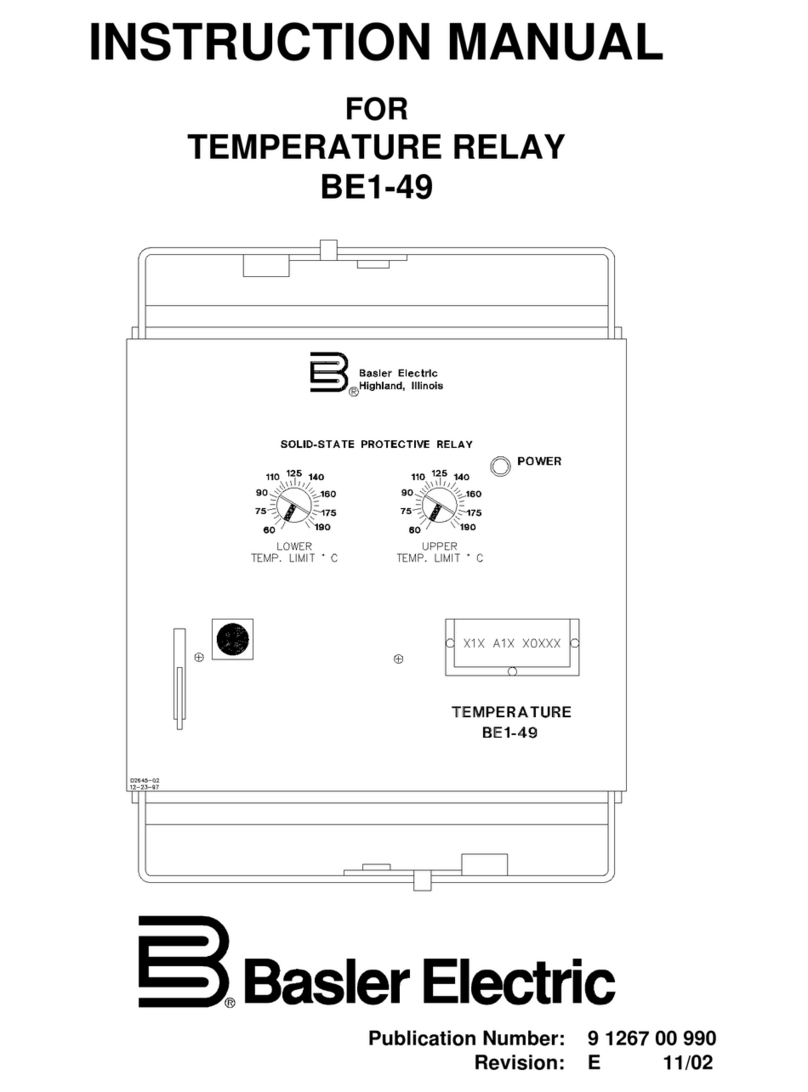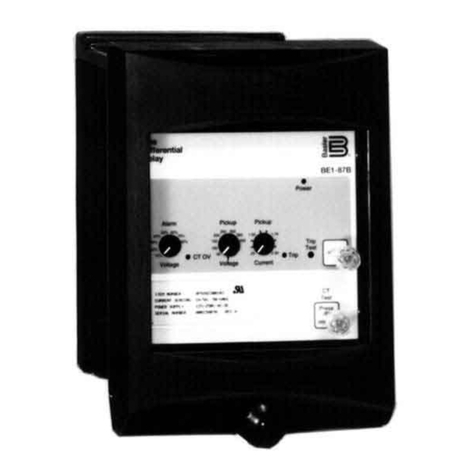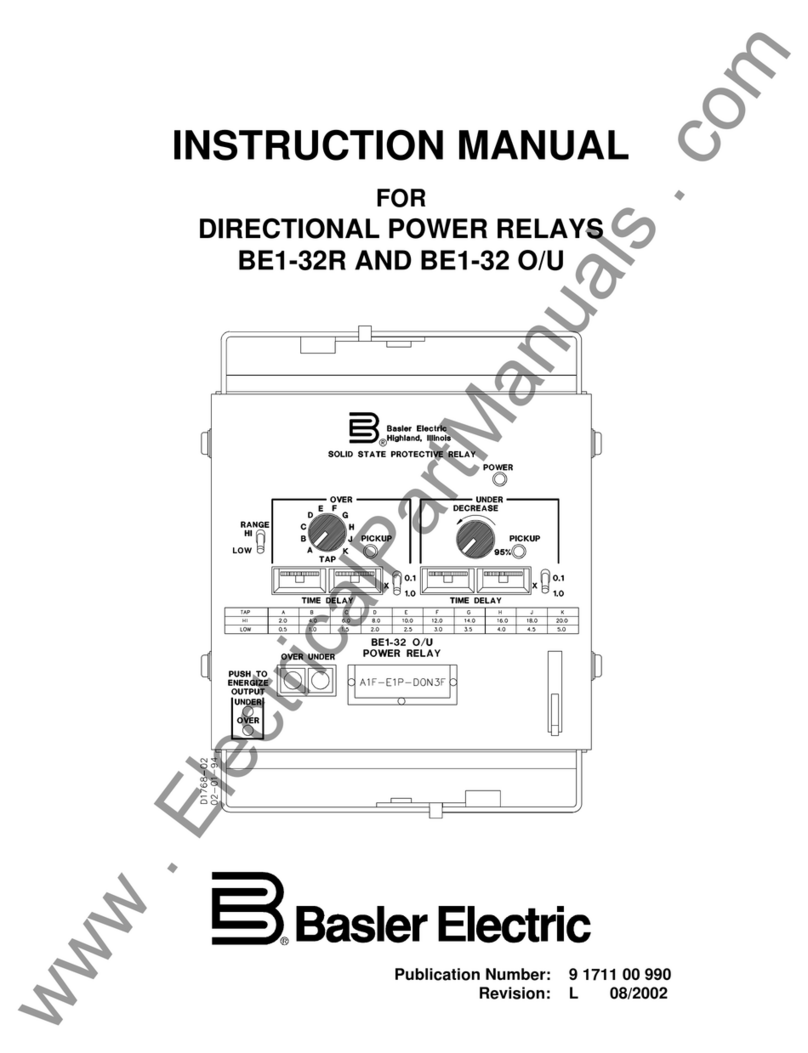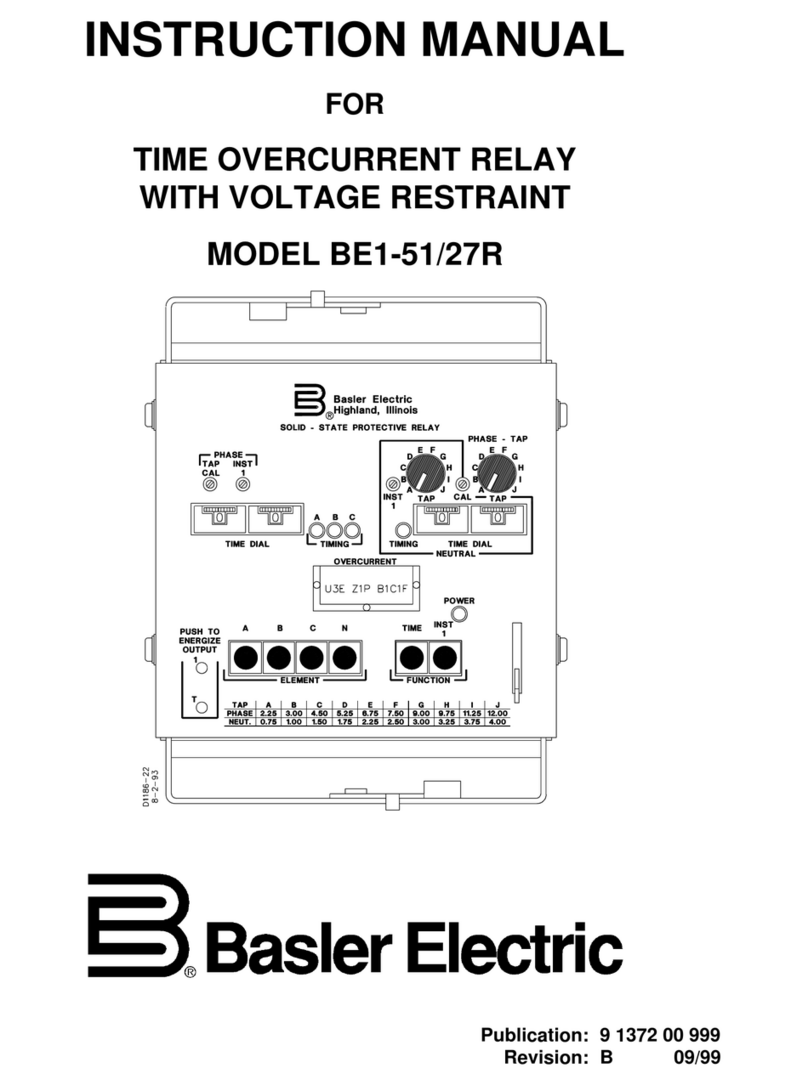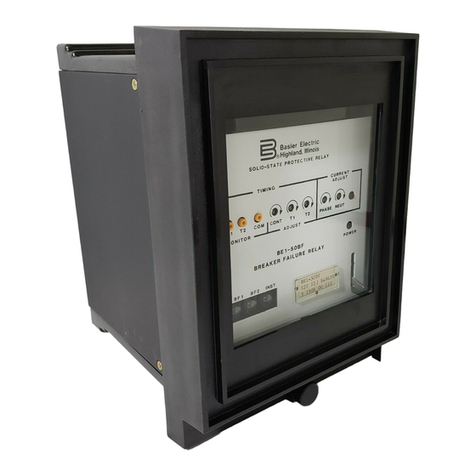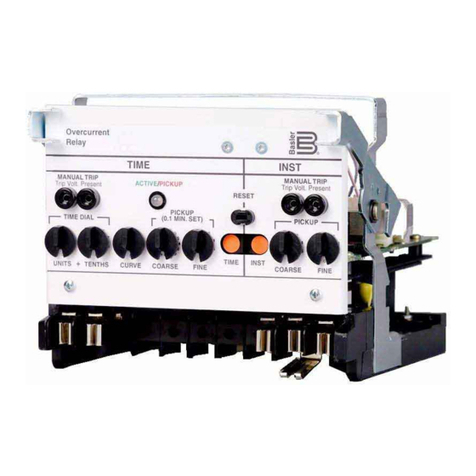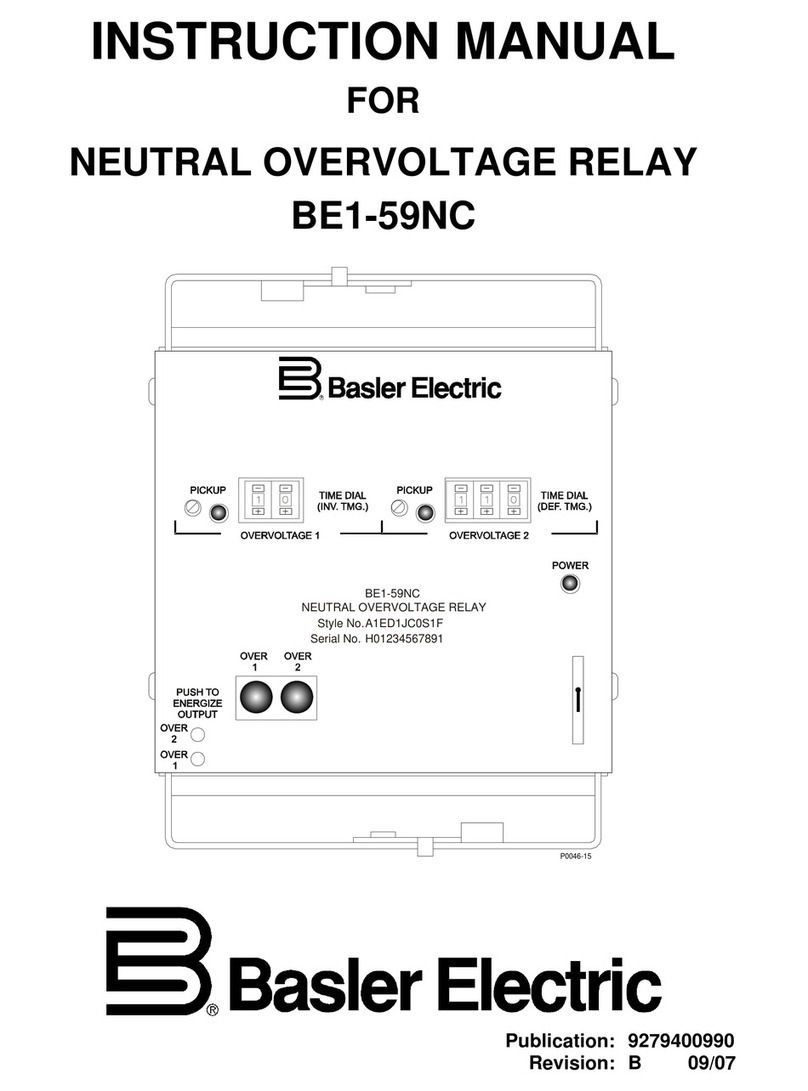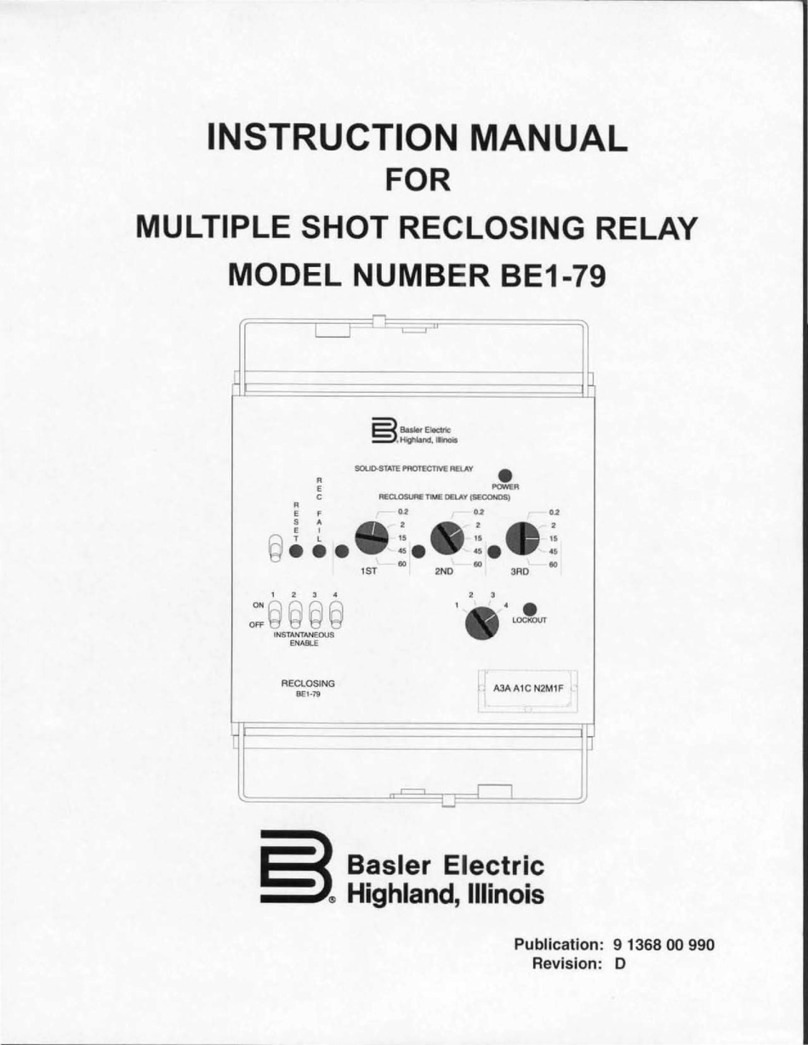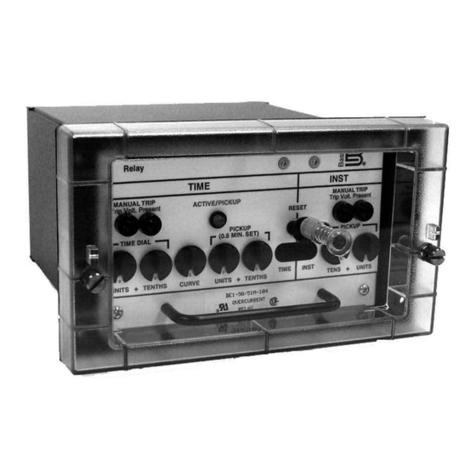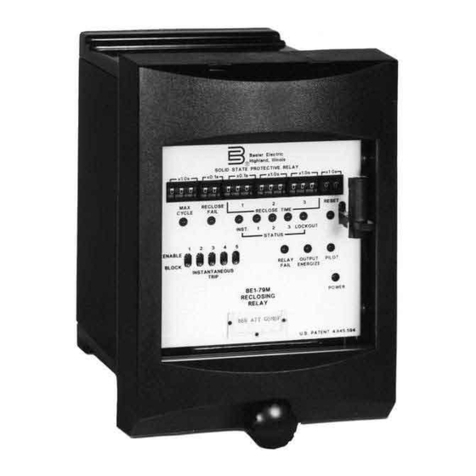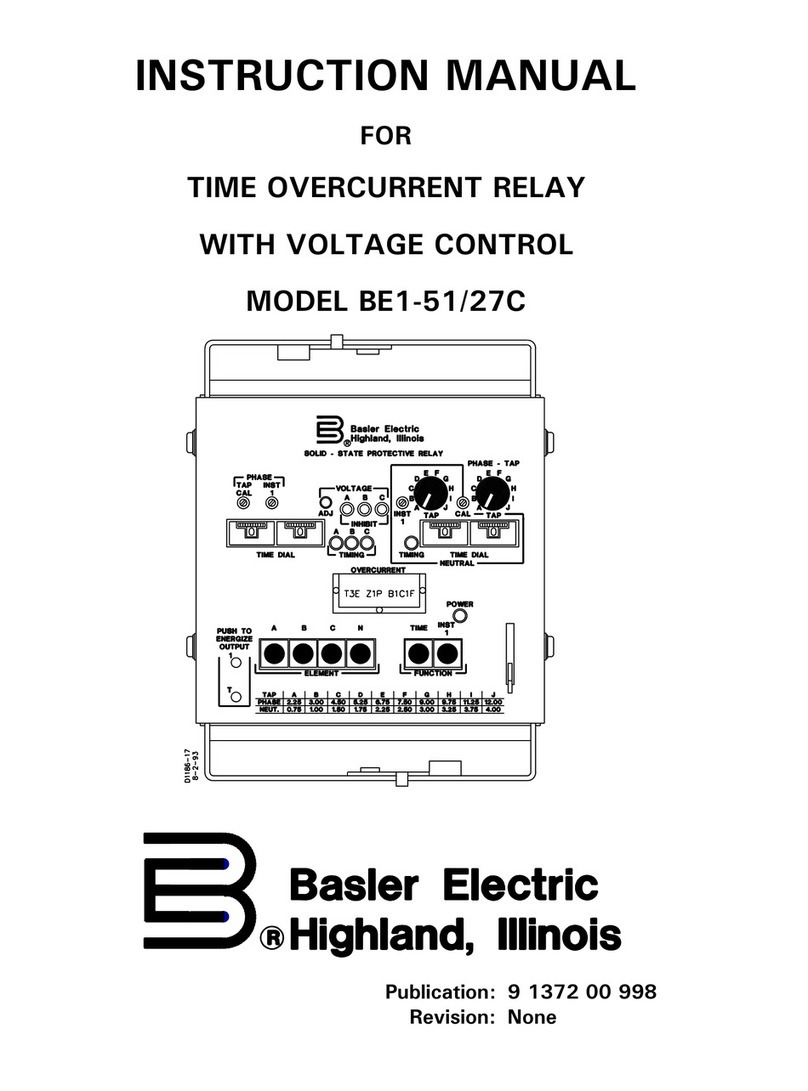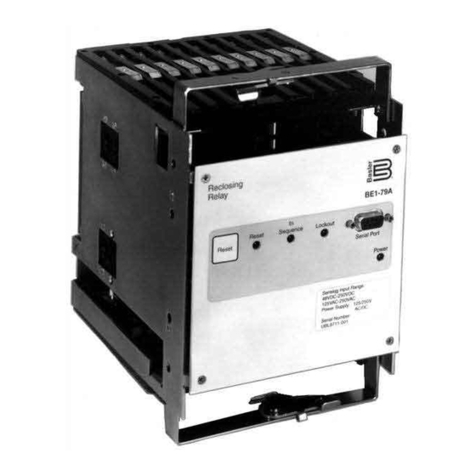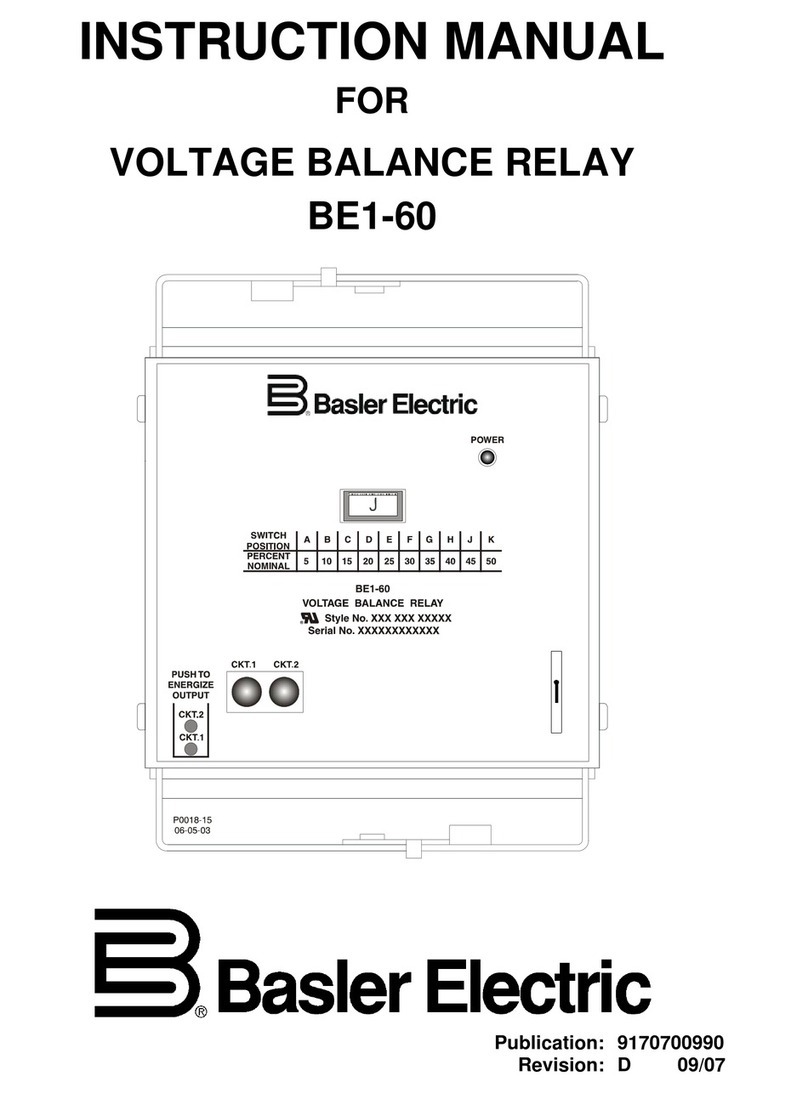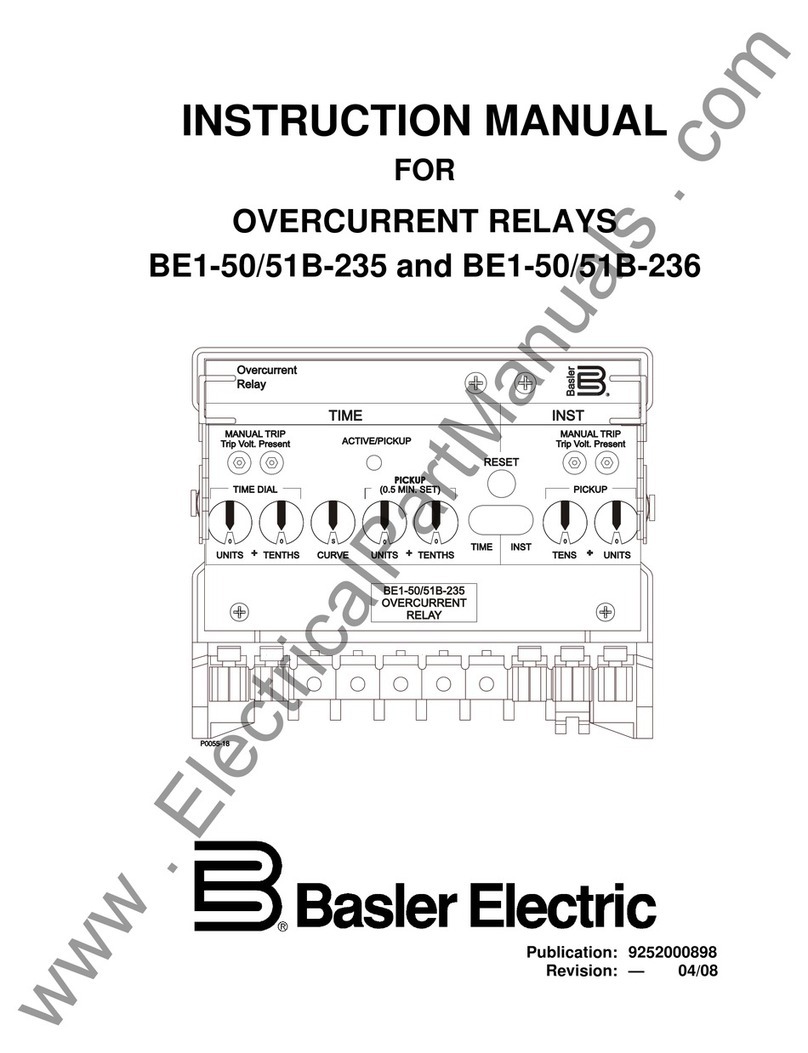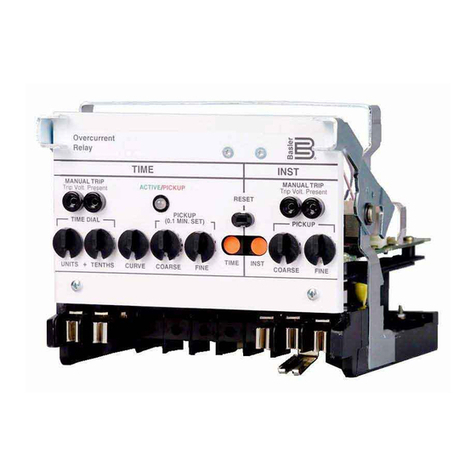
9137300990 Rev J BE1-81O/U Introduction v
CONTENTS
SECTION 1 •GENERAL INFORMATION................................................................................................ 1-1
INTRODUCTION................................................................................................................................. 1-1
FEATURES......................................................................................................................................... 1-1
Frequency Setpoints..................................................................................................................... 1-1
Time Delays.................................................................................................................................. 1-1
Undervoltage Inhibit...................................................................................................................... 1-1
Targets.......................................................................................................................................... 1-1
OPERATION....................................................................................................................................... 1-1
STYLE NUMBER................................................................................................................................ 1-1
SPECIFICATIONS.............................................................................................................................. 1-3
Sensing Input................................................................................................................................ 1-3
Operating Power Input.................................................................................................................. 1-3
Relay Outputs............................................................................................................................... 1-3
Output Contacts............................................................................................................................ 1-3
Target Indicators (Optional).......................................................................................................... 1-3
Frequency Setpoint ...................................................................................................................... 1-4
Time Delay.................................................................................................................................... 1-4
Undervoltage Inhibit...................................................................................................................... 1-4
Type Tests.................................................................................................................................... 1-4
Temperature Ratings.................................................................................................................... 1-5
UL Recognized............................................................................................................................. 1-5
GOST-R........................................................................................................................................ 1-5
Case Size ..................................................................................................................................... 1-5
Weight........................................................................................................................................... 1-5
SECTION 2 •CONTROLS AND INDICATORS ....................................................................................... 2-1
INTRODUCTION................................................................................................................................. 2-1
FRONT PANEL................................................................................................................................... 2-1
CIRCUIT BOARD................................................................................................................................ 2-2
Multiplier Settings......................................................................................................................... 2-3
Cycles/Seconds Settings.............................................................................................................. 2-3
SECTION 3 •FUNCTIONAL DESCRIPTION........................................................................................... 3-1
INTRODUCTION................................................................................................................................. 3-1
FUNCTIONAL DESCRIPTION ........................................................................................................... 3-1
Input Signal................................................................................................................................... 3-1
Undervoltage Inhibit...................................................................................................................... 3-1
Zero Crossing Logic ..................................................................................................................... 3-1
Crystal Oscillator .......................................................................................................................... 3-1
Period Clock Generator................................................................................................................ 3-1
Minimum Period Difference Logic ................................................................................................ 3-1
Maximum Period Difference Logic................................................................................................ 3-3
Measured Frequency Converter................................................................................................... 3-3
Frequency Comparator Logic....................................................................................................... 3-3
Definite Time Delay Logic............................................................................................................. 3-3
Relay Outputs............................................................................................................................... 3-5
Auxiliary Relay Outputs................................................................................................................ 3-5
Power Supply................................................................................................................................ 3-5
Power Supply Status Output ........................................................................................................ 3-5
Target Indicators........................................................................................................................... 3-5
SECTION 4 •INSTALLATION.................................................................................................................. 4-1
INTRODUCTION................................................................................................................................. 4-1
OPERATING PRECAUTIONS............................................................................................................ 4-1
MOUNTING......................................................................................................................................... 4-1
CONNECTIONS................................................................................................................................ 4-15
MAINTENANCE................................................................................................................................ 4-16
STORAGE......................................................................................................................................... 4-16
